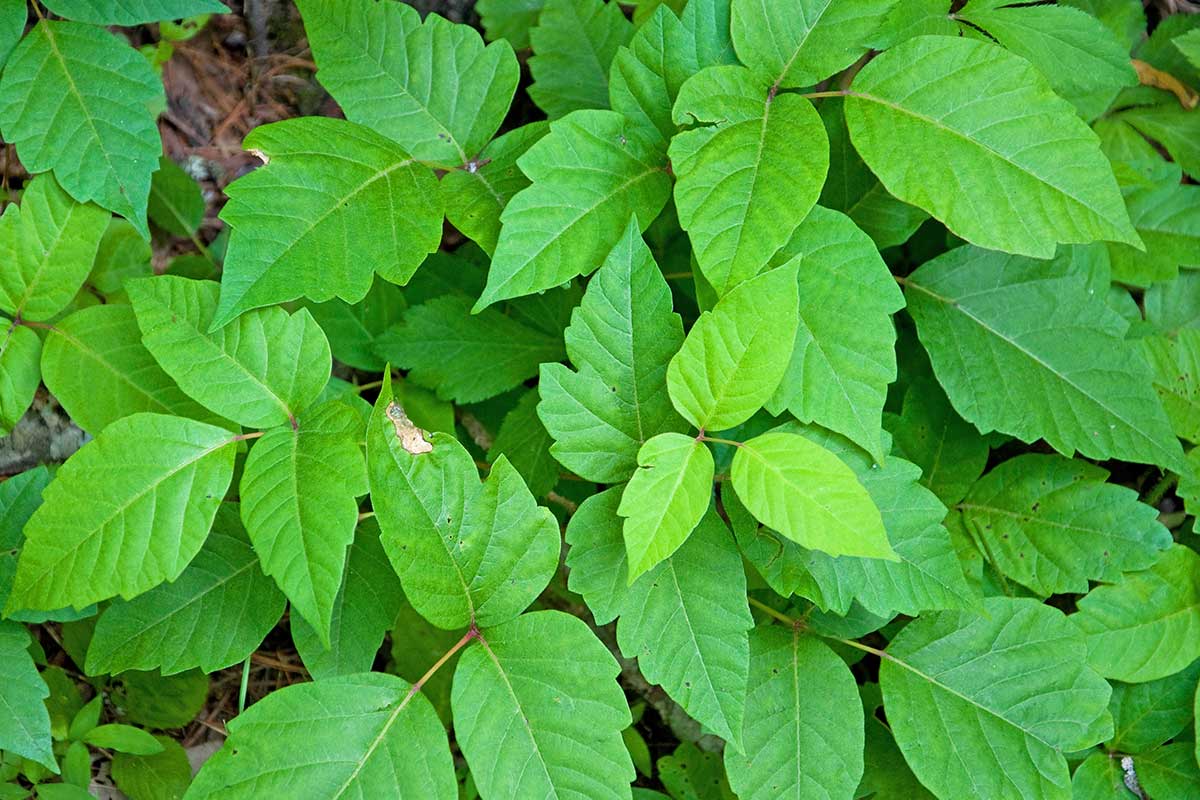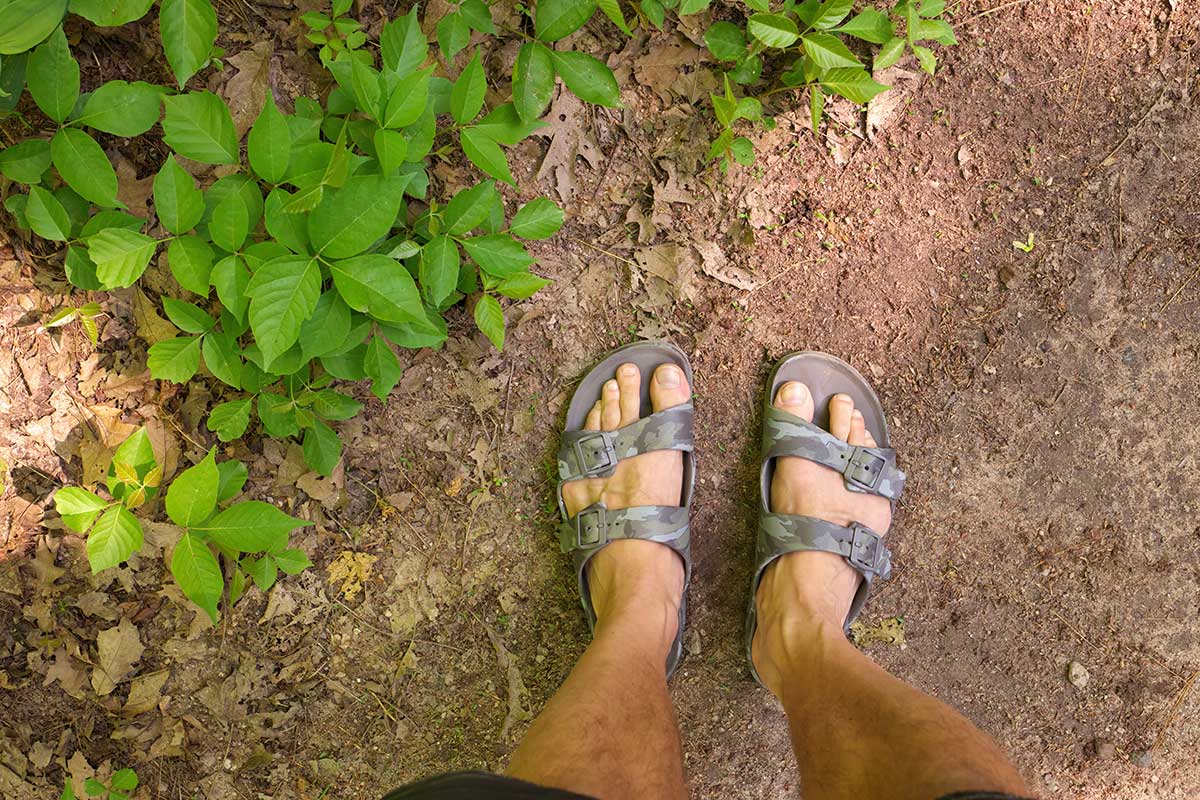“Leaves of three, let it be,” “hairy vine, no friend of mine,” “berries of white, run in fright” — there’s no shortage of rhymes to help you stay away from poison ivy. None of them, however, is as important as knowing what to do if you’re exposed.
Dr. Troy Baker, an allergy-immunology physician at Kaiser Permanente in Woodbridge, says poison ivy is most distinguishable by its three leaflets. The middle one, he says, has a noticeably longer stalk than the two outside ones. Other than that, though, “it can take on different forms.”
The leaves can be glossy or dull, hairy or smooth; the plant can look like a vine attached to a tree or it can be a stand-alone shrub; it can be 4 to 5 inches tall, or it can reach 4 feet.
Between 50 and 75 percent of people have an allergic reaction to poison ivy, Baker says, and while the plant is at its height in spring and summer, it can cause reactions year-round, “even in the dead of winter.”

Take Action
That all makes poison ivy difficult to avoid; the key is knowing what to do if you’ve been exposed.
The most important thing you can do to protect yourself is “basic barrier protections,” Baker says. Wear gloves, long sleeves, and long pants while you’re doing yard work, hiking, or any other outdoor activity. Even if you’re moving through it quickly, “you will get it all over your legs in one pass.”
The sap of the plant, called urushiol, is what people have reactions to; Baker says washing your clothes right after you come back indoors is important, and washing any exposed skin with a soap that cuts grease, such as dishwashing soap, is crucial. If you wash yourself within 10 minutes of coming back inside, you can get rid of about 50 percent of any oil that’s accumulated on your skin.
Just because you’re not itching immediately when you come back in from outside, you’re not out of the woods yet, Baker says. It can take up to four days to develop the rash and the itching that come with exposure to poison ivy — by the time you develop symptoms, “you may have no idea where it came from,” he says.
The rash can look like light red streaks, or an angry rash with giant blisters, Baker says. It generally lasts two weeks, but sometimes it can take six weeks to clear.
If you develop the rash, treatments can vary. The first things to try are calamine lotion, oatmeal baths, or over-the-counter steroid creams such as hydrocortisone, Baker says. Antihistamines such as Claritin or Zyrtec can help a little, too. Sometimes you’ll need to see a doctor for something stronger, such as a prescription steroid.
Don’t Scratch
Whatever you do, and however hard this advice can be to follow, don’t scratch the rash — that can break the skin and lead to the bacterial infection impetigo, Baker says.
He added that while he doesn’t know of any instances of pets developing a poison ivy rash, they can certainly get the sap on them, so washing them, and wearing gloves while you do it, will help lessen your chances of exposure.
So while the rhyming aphorisms may be easy to remember, the really important advice is: To avoid the rash, wash up fast.
Hey, wait a minute …
For more stories like this, subscribe to Northern Virginia Magazine’s Health newsletter.





